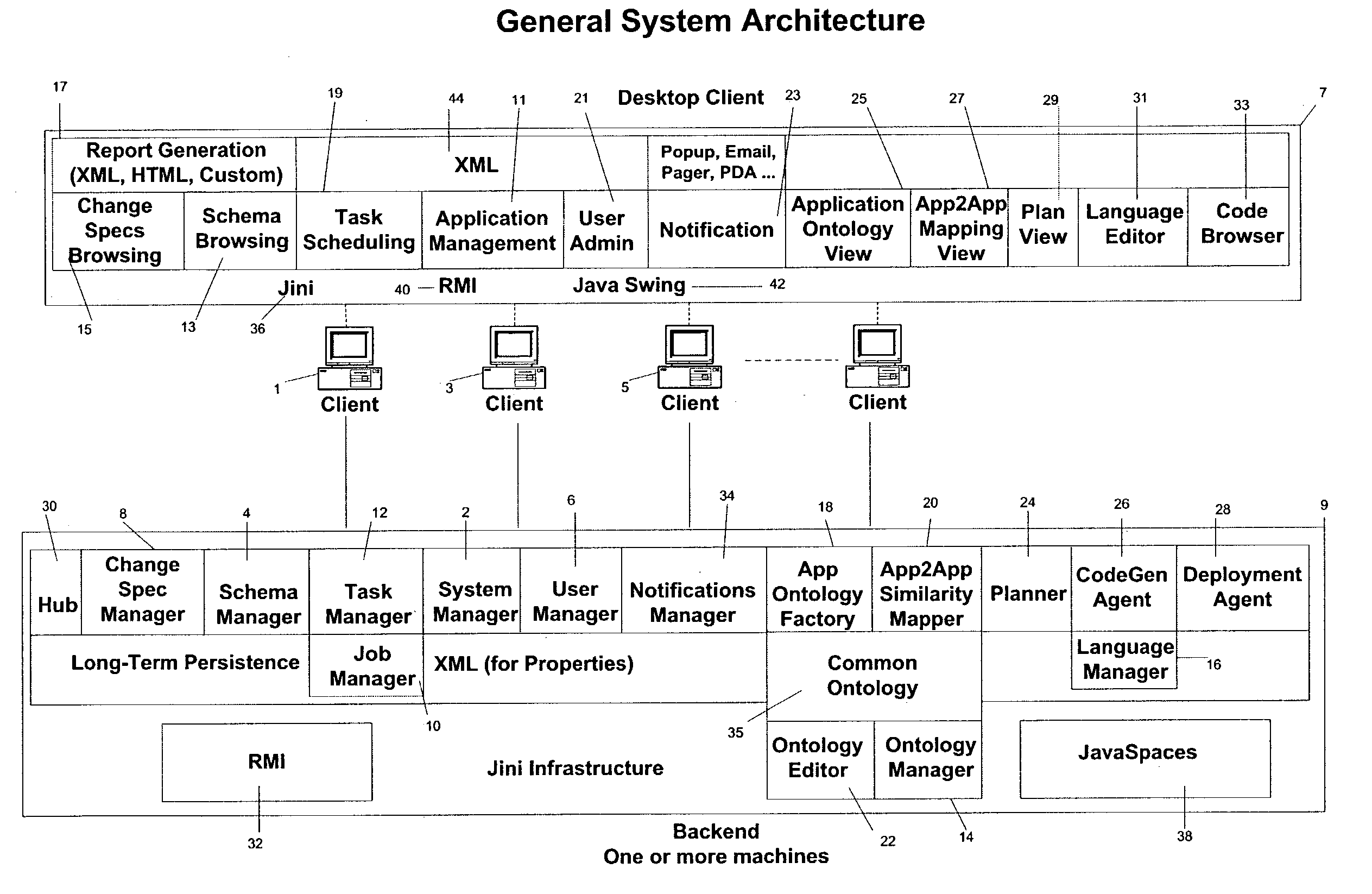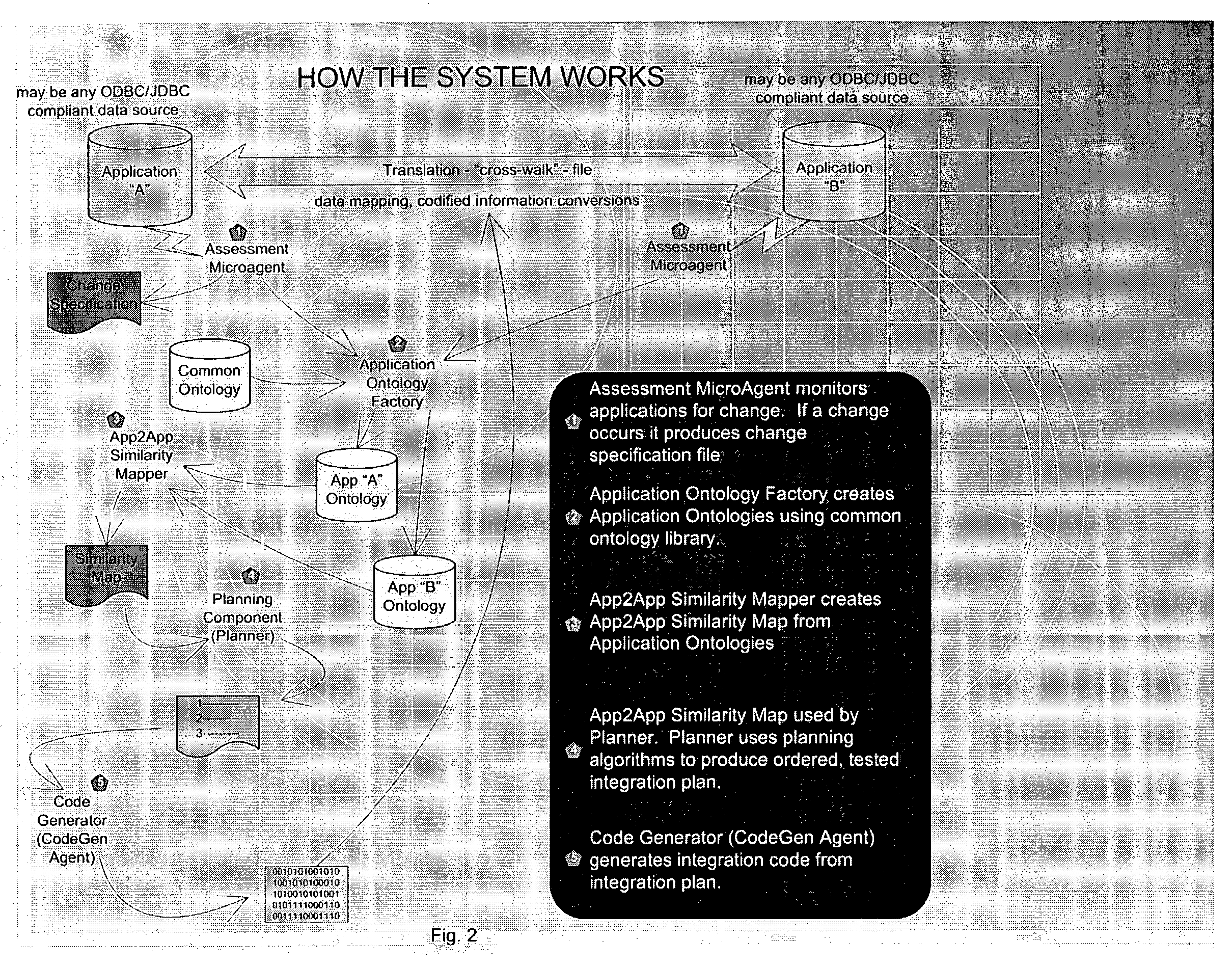System and method for autonomously generating heterogeneous data source interoperability bridges based on semantic modeling derived from self adapting ontology
a data source and semantic modeling technology, applied in knowledge representation, instrumentation, program control, etc., can solve the problems of affecting the integration effort, requiring extensive manual customization and ongoing maintenance, and requiring a large amount of customization, so as to reduce the dependencies of integration professional services consulting, enhance data security, and reduce the risk of integration
- Summary
- Abstract
- Description
- Claims
- Application Information
AI Technical Summary
Benefits of technology
Problems solved by technology
Method used
Image
Examples
Embodiment Construction
[0226] The invention is illustrated in an alternate illustration in FIG. 2 and includes processes associated with Assessment Micro Agent, App2App Similarity Mapper, Planner, Hub, Error Validation and Code Generation components. Note that some of the components in FIG. 1 are in fact subcomponents of the functional components described hereafter. For instance, the Assessment Micro Agent component is composed of the Schema, Change Specification, Task and Job Managers in FIG. 1. In other words, the combination of these managers are an embodiment of the Assessment Micro Agent.
[0227] The functional components of the invention are described in FIG. 2. This figure shows how the functional components interact with each other and with two applications that are the target for integration.
[0228] First of all, applications A and B, which may be any ODBC or JDBC compliant data sources, are monitored by the Assessment Micro Agent component of the invention. Note that ODBC and JDBC are just example...
PUM
 Login to View More
Login to View More Abstract
Description
Claims
Application Information
 Login to View More
Login to View More - R&D
- Intellectual Property
- Life Sciences
- Materials
- Tech Scout
- Unparalleled Data Quality
- Higher Quality Content
- 60% Fewer Hallucinations
Browse by: Latest US Patents, China's latest patents, Technical Efficacy Thesaurus, Application Domain, Technology Topic, Popular Technical Reports.
© 2025 PatSnap. All rights reserved.Legal|Privacy policy|Modern Slavery Act Transparency Statement|Sitemap|About US| Contact US: help@patsnap.com



